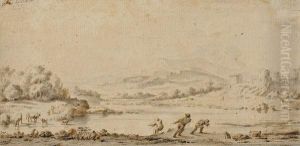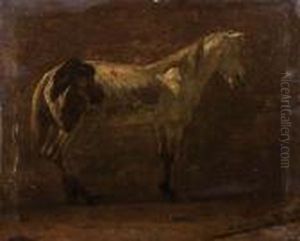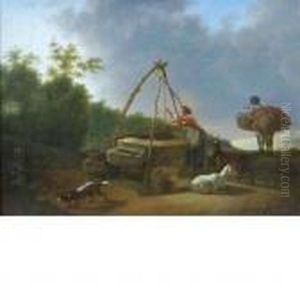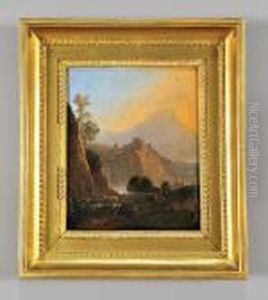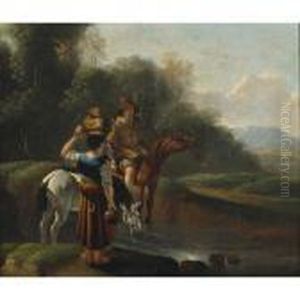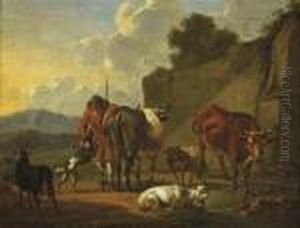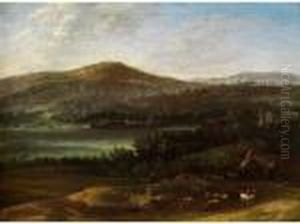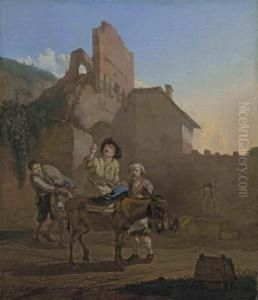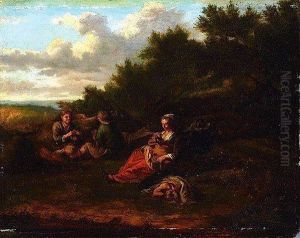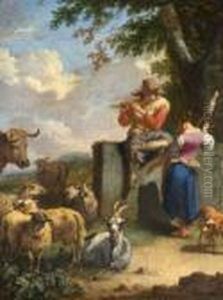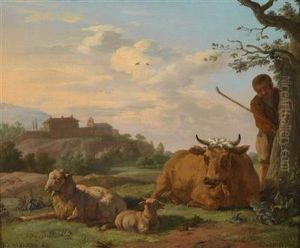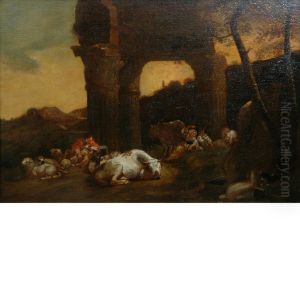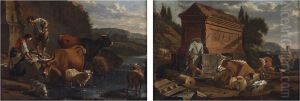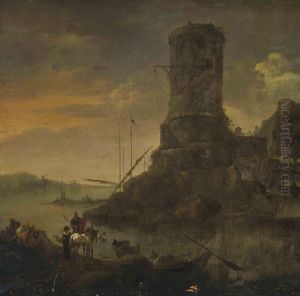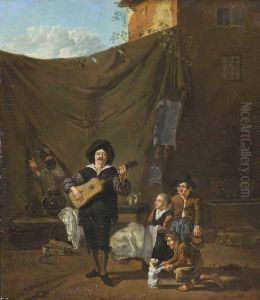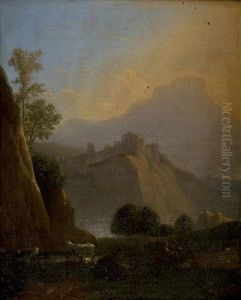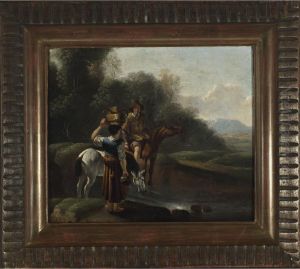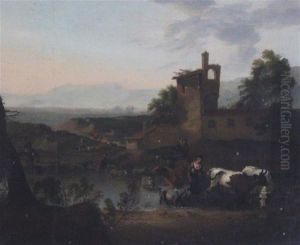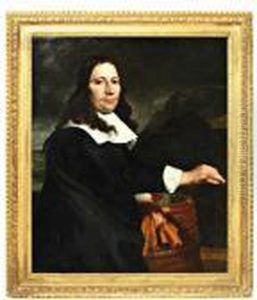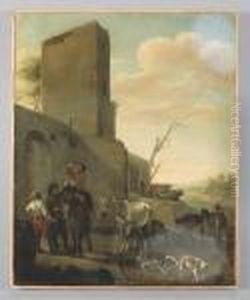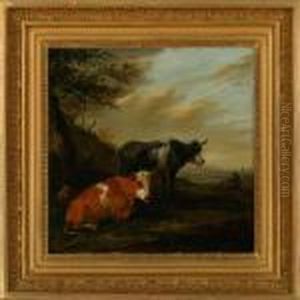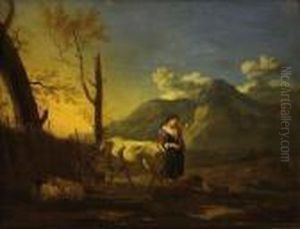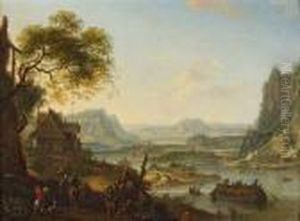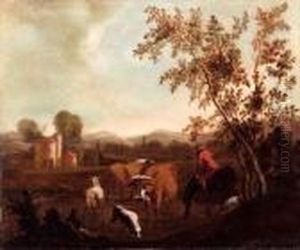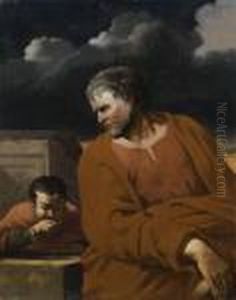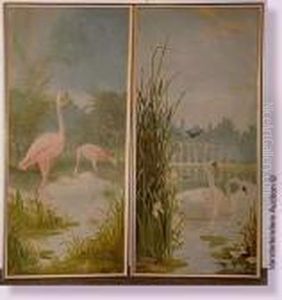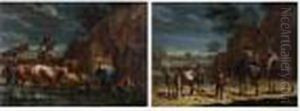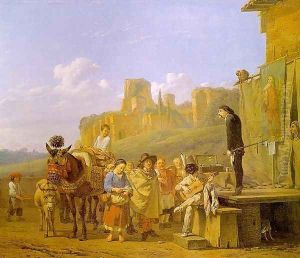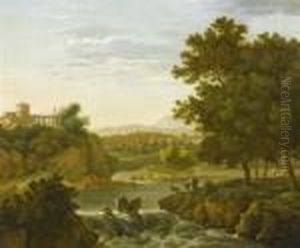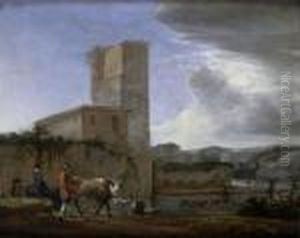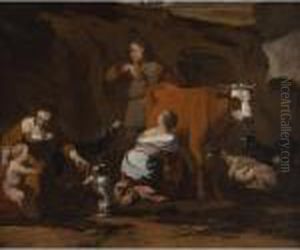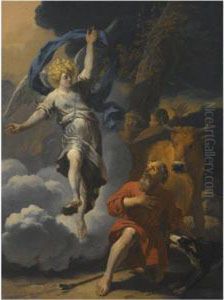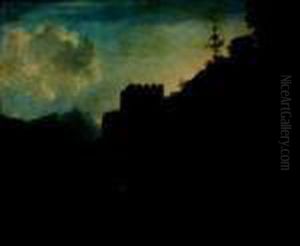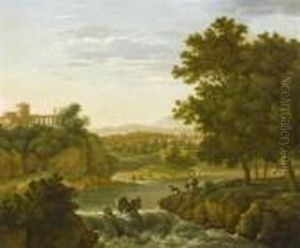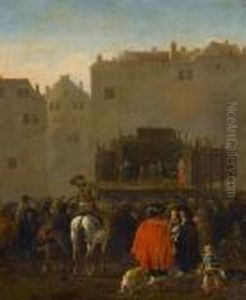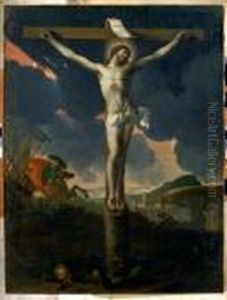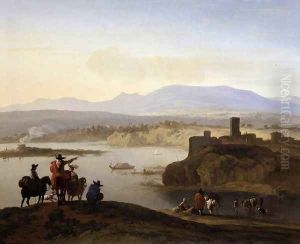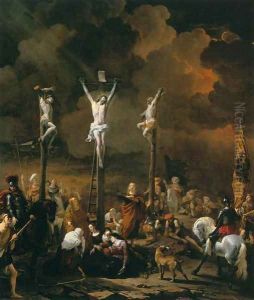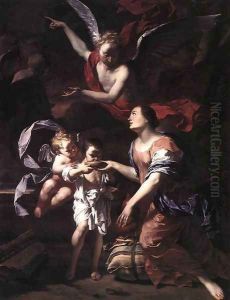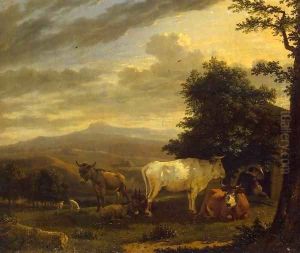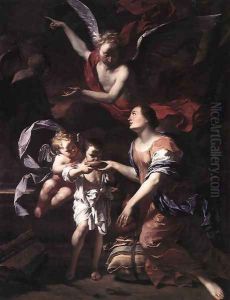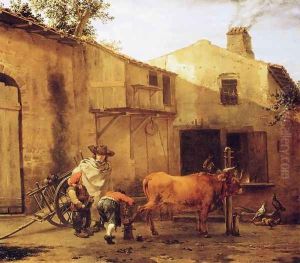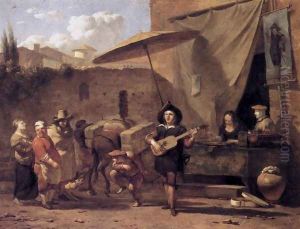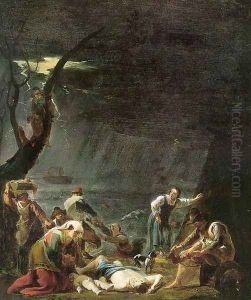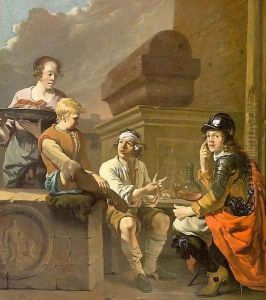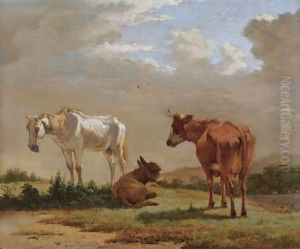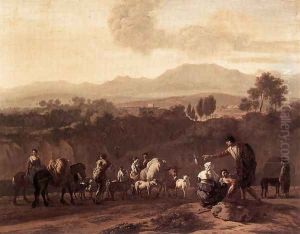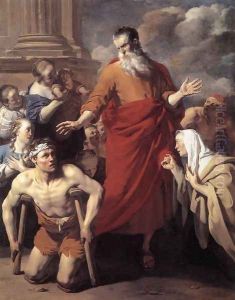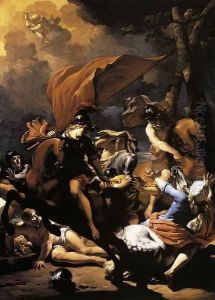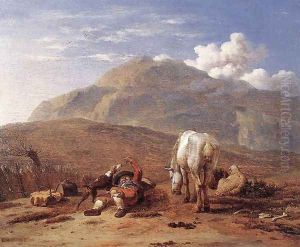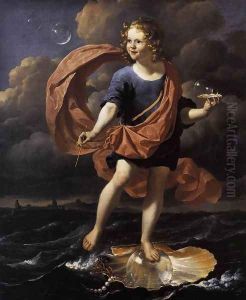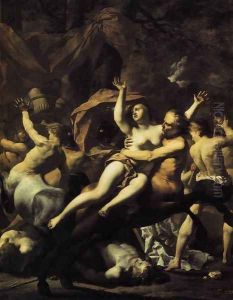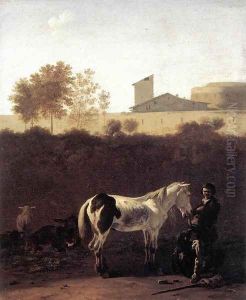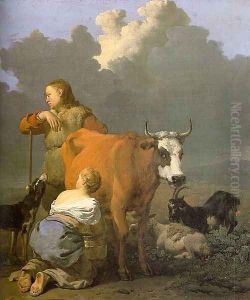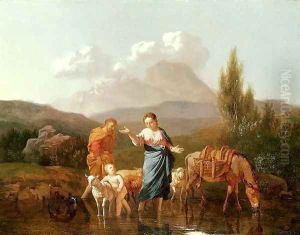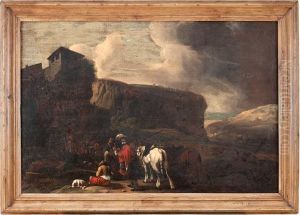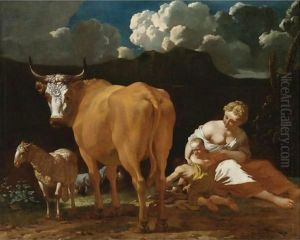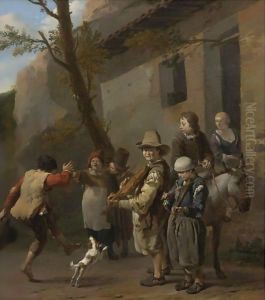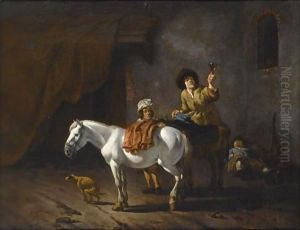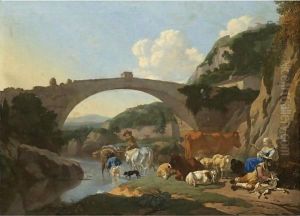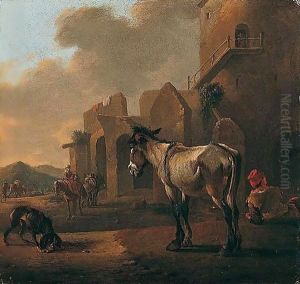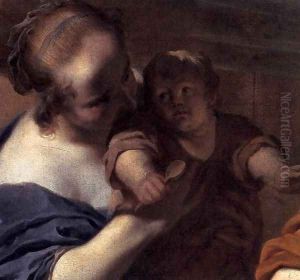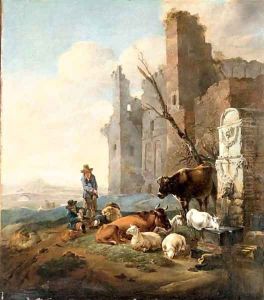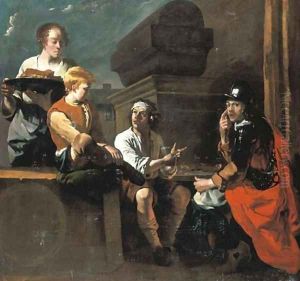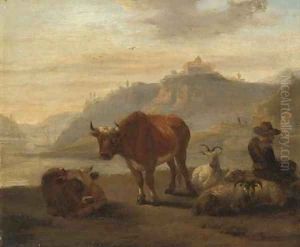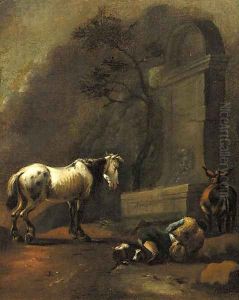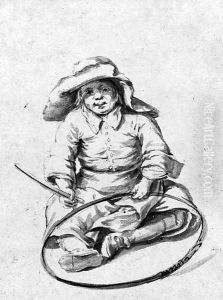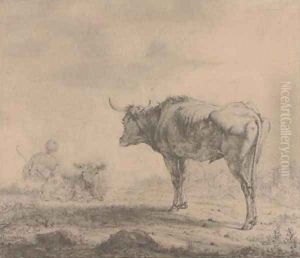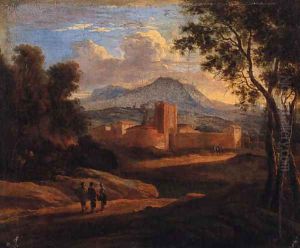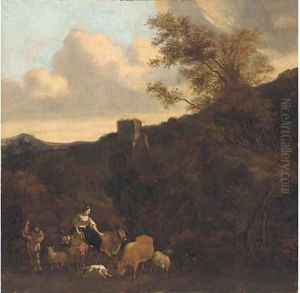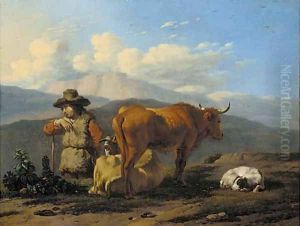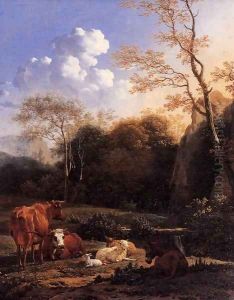Karel Dujardin Paintings
Karel Dujardin was a Dutch Golden Age painter and etcher, known for his pastoral landscapes, animals, and Italianate genre scenes. He was born in Amsterdam in 1626 and developed an interest in art at a young age. Dujardin is often associated with the Bamboccianti, a group of mostly Dutch and Flemish artists working in Rome who painted scenes of everyday life.
Dujardin's early work was influenced by Paulus Potter and Nicolaes Pieterszoon Berchem, leading artists of the time known for their pastoral scenes and animal paintings. Dujardin's skill in depicting animals, especially livestock, garnered him much acclaim. He was also influenced by the work of the Italian painter Claude Lorrain, whose classical landscapes would have a lasting impact on Dujardin's compositions.
In 1655, Dujardin went to Italy, where he was exposed to the work of the Bamboccianti. He spent a significant amount of time in Rome, where he absorbed the Italianate style, which he later incorporated into his own paintings. His work from this period demonstrates a keen observation of light, atmosphere, and the rural life of shepherds, peasants, and their livestock.
Upon returning to the Netherlands around 1656, Dujardin became a member of the Guild of Saint Luke in The Hague. He continued to paint scenes influenced by his time in Italy, and his works were sought after by collectors and connoisseurs. Despite his success, little is known about his personal life.
Dujardin's paintings are characterized by their warm, golden light and soft, harmonious tones. He was adept at rendering the textures of fur and foliage, and his compositions often lead the viewer's eye through a series of planes into the distance, creating a sense of depth and openness.
Karel Dujardin died in Venice in 1678. His work had a lasting impact on the development of Dutch landscape and animal painting. Today, his paintings can be found in major museums around the world, including the Louvre in Paris, the Hermitage Museum in Saint Petersburg, and the Metropolitan Museum of Art in New York. Dujardin's artistic legacy is that of a master who bridged the pastoral tradition of Dutch painting with the classical landscapes of the Italian tradition.
